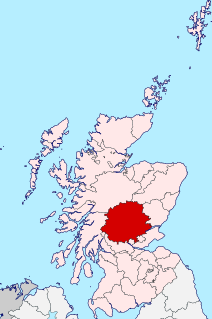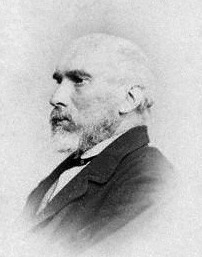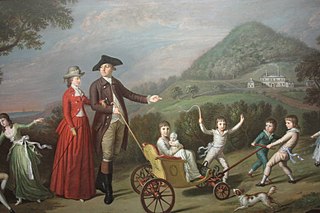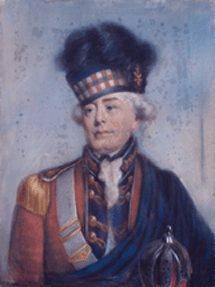
Perthshire, officially the County of Perth, is a historic county and registration county in central Scotland. Geographically it extends from Strathmore in the east, to the Pass of Drumochter in the north, Rannoch Moor and Ben Lui in the west, and Aberfoyle in the south; it borders the counties of Inverness-shire and Aberdeenshire to the north, Angus to the east, Fife, Kinross-shire, Clackmannanshire, Stirlingshire and Dunbartonshire to the south and Argyllshire to the west. It was a local government county from 1890 to 1930.

Perth and Kinross is one of the 32 council areas of Scotland and a Lieutenancy Area. It borders onto the Aberdeenshire, Angus, Argyll and Bute, Clackmannanshire, Dundee, Fife, Highland and Stirling council areas. Perth is the administrative centre. With the exception of a large area of south-western Perthshire, the council area mostly corresponds to the historic counties of Perthshire and Kinross-shire.

Blairgowrie and Rattray is a twin burgh in Perth and Kinross, Scotland. Locals refer to the town as "Blair". Blairgowrie is the larger of the two former burghs which were united by an Act of Parliament in 1928 and lies on the southwest side of the River Ericht while Rattray is on the northeast side. Rattray claims to be the older and certainly Old Rattray, the area round Rattray Kirk, dates back to the 12th century. New Rattray, the area along the Boat Brae and Balmoral Road dates from 1777 when the River was spanned by the Brig o' Blair. The town lies on the north side of Strathmore at the foot of the Grampian Mountains. The west boundary is formed by the Knockie, a round grassy hill, and Craighall Gorge on the Ericht. Blairgowrie and Rattray developed over the centuries at the crossroads of several historic routes with links from the town to Perth, Coupar Angus, Alyth and Braemar. The roads to Coupar Angus and Braemar form part of General Wade's military road from Perth to Fort George. The town's centrepiece is the Wellmeadow, a grassy triangle in the middle of town which hosts regular markets and outdoor entertainment.

Sir William Stirling-Maxwell, 9th Baronet MP KT, of Pollok FRSE DCL LLD, was a Scottish historical writer, art historian and politician.

Sir Thomas Hope, 1st Baronet Hope of Craighall (1573–1646) was a Scottish lawyer, and Lord Advocate under Charles I.

Clan Hope is a Lowland Scottish clan.

Fingask Castle is a country house in Perth and Kinross, Scotland. It is perched 200 feet (61 m) above Rait, three miles (5 km) north-east of Errol, in the Braes of the Carse, on the fringes of the Sidlaw Hills. Thus it overlooks both the Carse of Gowrie and the Firth of Tay and beyond into the Kingdom of Fife. The name derives from Gaelic fionn-gasg: a white or light-coloured appendage.

Kirkmichael is a village located in Strathardle, Perth and Kinross, Scotland. It is 13 miles north-northwest of Blairgowrie and 12 miles east-northeast of Pitlochry on the A924 Bridge of Cally to Pitlochry road, and is linked to the A93 Perth to Aberdeen road by the B950. The village is centred around Kirkmichael Bridge over the River Ardle.

Sir James Hunter Blair, 1st Baronet FRSE was a Scottish banker, landowner and politician.

Kindrogan House is located near Enochdhu, Blairgowrie, Perth and Kinross in Moulin parish, at the head of Strath Ardle, 7 miles (11 km) ENE of Pitlochry and 2+1⁄2 miles (4.0 km) northwest of Kirkmichael. It is run by Somerville Enterprises CIC a not-for-profit community interest company.

The Cateran Trail is a 103-kilometre (64 mi) circular long-distance walking route in central Scotland. The trail has no official beginning or end and can be joined at any stage. The route was established, way-marked and is now maintained by, the Perth & Kinross Countryside Trust. A variety of terrain is covered by the trail including farmland, mountains and forest. The path itself follows old drovers' roads, minor paved roads and farm tracks and can be walked in 4 or 5 days. It is now designated as one of Scotland's Great Trails by NatureScot. As of 2018 it was estimated that around 8,000 people were using the trail each year.

John Small was a career British military officer from Scotland who played a key role in raising and leading the 84th Regiment of Foot during the American Revolution. After the war, he settled with many of the men of the 84th Regiment in Douglas Township, Hants County, Nova Scotia. The British Crown granted land to soldiers after the war to encourage settlement, especially in Upper Canada.

The River Ardle is a tributary of the River Ericht. It runs for 10 miles (16 km) through Strathardle in Perthshire, Scotland. It is a salmon and trout river.

James Small was a Justice of the Peace and Deputy Lieutenant for the County of Perth, Scotland and the Laird of Dirnanean.
James Small was a retired Army officer, a factor of forfeited estates in Perthshire and an improver of Kinloch Rannoch, Scotland.
Sir John Hope, Lord Craighall (1605?–1654) was a Scottish judge.

Sir John Ireland Falconer, WS was the Lord Provost of Edinburgh, Scotland from 1944 to 1947.
Sir Archibald Hope, Lord Rankeillor was a Scottish advocate and judge, the second son of John Hope, Lord Craighall, the grandfather of the botanist John Hope and the great-grandfather of the chemist Thomas Charles Hope, FRSE.

Sir Archibald Hope, 9th Baronet Hope of Craighall was a Scottish aristocrat.

Balvarran is an old laird's house and estate in Strathardle, Perth and Kinross. It is situated to the east of the River Ardle, a mile east of Enochdhu. In 1554 the Earl of Atholl granted a charter of the lands of Invercrosky and Whitefield to Baron Ruadh, who built a house on the land which he named Balvarran, meaning Township of the Baron.

































